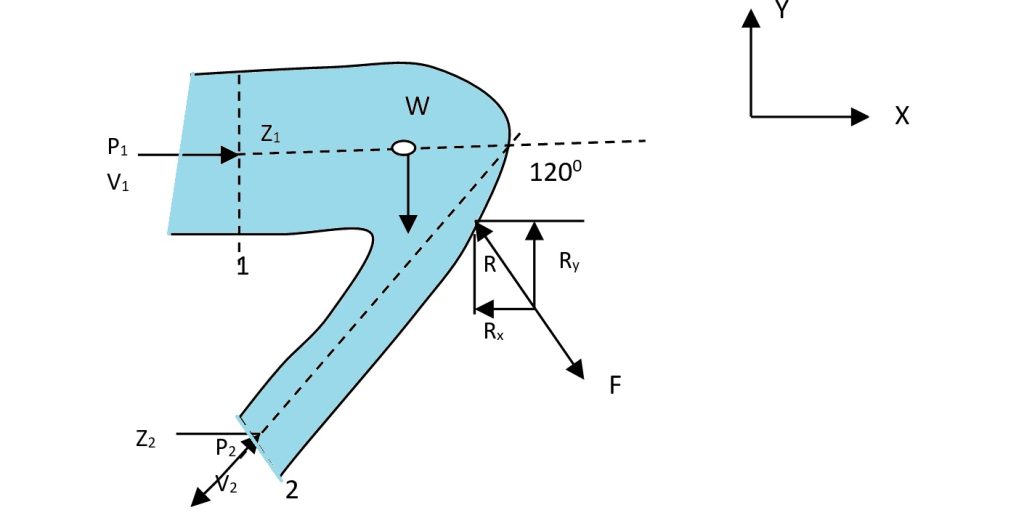Problem Statement
Find the diameter of a circular sewer pipe which is laid at a slope of 1 in 10000 and carries a discharge of 1000 litres/s when flowing half full. Take the value of Manning's N = 0.02.
Given Data & Constants
- Bed slope, \(i = 1 \text{ in } 10000 = \frac{1}{10000}\)
- Discharge, \(Q = 1000 \, \text{L/s} = 1.0 \, \text{m}^3/\text{s}\)
- Flow condition: Half full
- Manning's roughness coefficient, \(N = 0.02\)
Solution
1. Define Geometric Properties for a Half-Full Pipe
For a circular pipe of diameter D flowing half full, the geometric properties are:
$$ \text{Area of flow, } A = \frac{1}{2} \left( \frac{\pi}{4} D^2 \right) = \frac{\pi}{8} D^2 $$
$$ \text{Wetted Perimeter, } P = \frac{1}{2} (\pi D) = \frac{\pi}{2} D $$
$$ \text{Hydraulic Mean Depth, } m = \frac{A}{P} = \frac{\frac{\pi}{8} D^2}{\frac{\pi}{2} D} = \frac{D}{4} $$
2. Apply Manning's Formula
We use Manning's formula for discharge, \(Q = A \times V\), and substitute the expression for velocity.
$$ Q = A \times \frac{1}{N} m^{2/3} i^{1/2} $$
Now, substitute the geometric properties in terms of D into the formula.
$$ 1.0 = \left(\frac{\pi}{8} D^2\right) \times \frac{1}{0.02} \times \left(\frac{D}{4}\right)^{2/3} \times \left(\frac{1}{10000}\right)^{1/2} $$
$$ 1.0 = \left(\frac{\pi}{8} D^2\right) \times 50 \times \frac{D^{2/3}}{4^{2/3}} \times \frac{1}{100} $$
$$ 1.0 = \frac{\pi \times 50}{8 \times 100 \times 4^{2/3}} \times D^{2 + 2/3} $$
$$ 1.0 = \frac{157.08}{800 \times 2.5198} \times D^{8/3} $$
$$ 1.0 \approx 0.0779 \times D^{8/3} $$
3. Solve for the Diameter (D)
$$ D^{8/3} = \frac{1.0}{0.0779} \approx 12.837 $$
$$ D = (12.837)^{3/8} \approx 2.60 \, \text{m} $$
Final Result:
The required diameter of the circular sewer pipe is approximately \(2.60 \, \text{m}\).
Explanation of the Method
This problem requires finding a dimension (diameter) when the flow rate is known. The process involves:
- Defining Geometry in Terms of D: Since the diameter is the unknown, we express the key geometric properties—Area (A) and Hydraulic Mean Depth (m)—as functions of D for the given flow condition (half-full).
- Setting up the Equation: We substitute these expressions into Manning's formula for discharge. This creates a single equation where the only unknown variable is D.
- Solving for D: The final step is to algebraically solve this equation for D. This involves combining the powers of D and isolating it to find the required pipe diameter. The very shallow slope (1 in 10000) is the reason a large diameter is required to carry the specified discharge.





